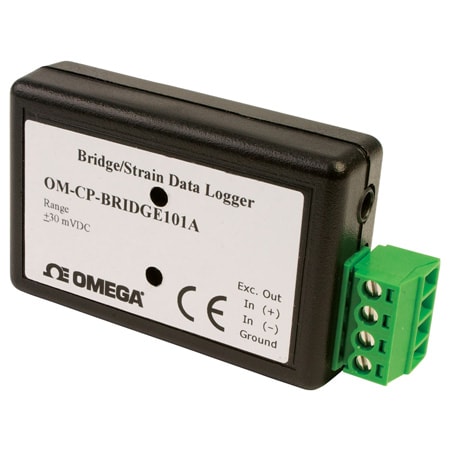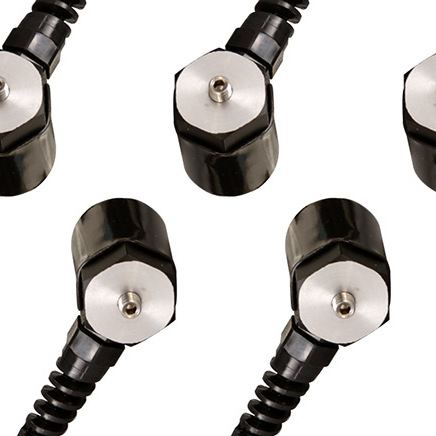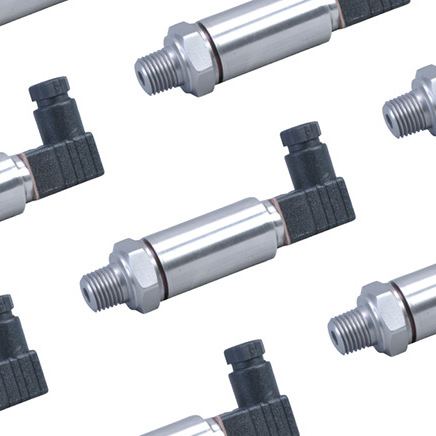When you apply force to a load cell, it causes deformation on the strain gauge – which is placed in the configuration of a Wheatstone bridge. The device measures the extent of deformation and converts it to electrical signals.
A data logger takes data from the load cell and stores the data for later use. It essentially acts as a bridge between the computer and the load cell.
Selecting the Right Data Logger for Your Load Cell
When selecting a data logger for your application, its specifications are of high importance. Some important features to look out for when buying a data logger are:Input Parameter Type
A data logger used for load cell applications must be capable of measuring different combinations of the input parameters. These include pressure/intrinsically safe, bridge/strain, shock/vibration, etc. While most data loggers are compatible with most types of signals, it is usually recommended to use data loggers designed for specific signal types.Number of Channel Inputs
There are two fundamental types of data loggers based on the number of input channels available – single-channel and multi-channel. With multi-channel data loggers, handling more complex and demanding applications is easy.Size
Some industrial applications have space constraints. In such cases, the size and the form factor of a data logger becomes a critical parameter. Certain applications require data loggers that can fit through a small opening, for example, while others require larger devices.Accuracy and Repeatability
The accuracy of a data logger is dependent on the type of measurement application. In case there is a need to make precise weighing measurements, the accuracy is of prime importance. However, if the data logger is supposed to be used for long-term monitoring or less-critical applications, the accuracy will have a minor role.However, it is important to note that data logger accuracy is not the same for a full range of measurements. Manufacturers usually provide a curve diagram or operating environment conditions such as temperature range and humidity within which the data logger will remain accurate.
Along with accuracy, data loggers much also have high repeatability. This essentially means that the data logger will produce the same results when used in similar measurement conditions.
Sampling Rate/Memory
In many applications, a data logger is required to collect data as fast as possible. In such scenarios, the speed of data acquisition or the sampling rate is critical. However, with higher sampling rates, the memory requirement also increases. As such, when selecting a data logger, it is important to determine the sampling rate and the simple duration. Knowing these values will help you calculate the memory requirements. For example, an application that requires a sampling rate of 1 per second and a test duration or 1 hour will need 3600 samples.Selecting the Right DAQ System for Your Load Cell
When selecting the right Data Acquisition (DAQ) system for your load cell, there are several key parameters that should be considered, including:Connectivity and Expansion
Consider the connectivity options of the DAQ system, such as USB, Ethernet, or wireless. Additionally, check it the system allows for future expansion or modular upgrades to accommodate potential scalability needs.Number of Channel Inputs
Determine the number of channels needed to accommodate your load cell setup. Ensure that the DAQ system provides enough channels to connect and monitor all the load cells in your system simultaneously.Measurement Range
Ensure that the DAQ system supports the measurement range required by your load cell. It should be capable of accurately capturing both the minimum and maximum expected load values.Sampling Rate
Consider the sampling rate capability of the DAQ system. It should be able to sample data at a frequency that adequately captures the dynamics of your load cell application. Higher sampling rates are crucial for capturing fast-changing loads.Resolution
Check the resolution of the DAQ system, which determines the smallest change in load that can be detected. Higher resolution enables more precise measurements, especially for applications that require fine-grained accuracy.Software Compatibility
Assess the compatibility of the DAQ system with the software tools you intend to use for data analysis and visualization. Ensure that the DAQ system can integrate seamlessly with your preferred software environment. By carefully considering these parameters, you can select a suitable DAQ system that meets your load cell requirements, enabling accurate and reliable data acquisition for your specific application.Manufacturer’s Support
Getting the support from your manufacturer just when you need it is important to ensure that you receive value for your investment in a data logger. A manufacturer should offer the service and must be able to provide spare parts for your data logger when you need them.Some additional criteria that must be taken into account when selecting a data logger for load cells include:
- Compensation for the read values based on temperature
- Maximum number of readings that it can store
- The battery life of the device
- Type of memory: Always prefer non-volatile memory
- Water and weather resistance
- What is a Load Cell?
- Types of Load Cells
- Selecting a Load Cell
- FAQ
- Installing a Load Cell
- How to Wire a Load Cell?
- Troubleshooting
- Amplifiers for Load Cells
- Data Loggers for Load Cells
- Load Cell Meter
- Load Cell Controller
- Signal Conditioners
- Weighing Trucks, Trains, and Aircraft
- Dynamic Load Measurement
- Testing Load Tolerance in Cables
- Critical Component in X-ray Laser


